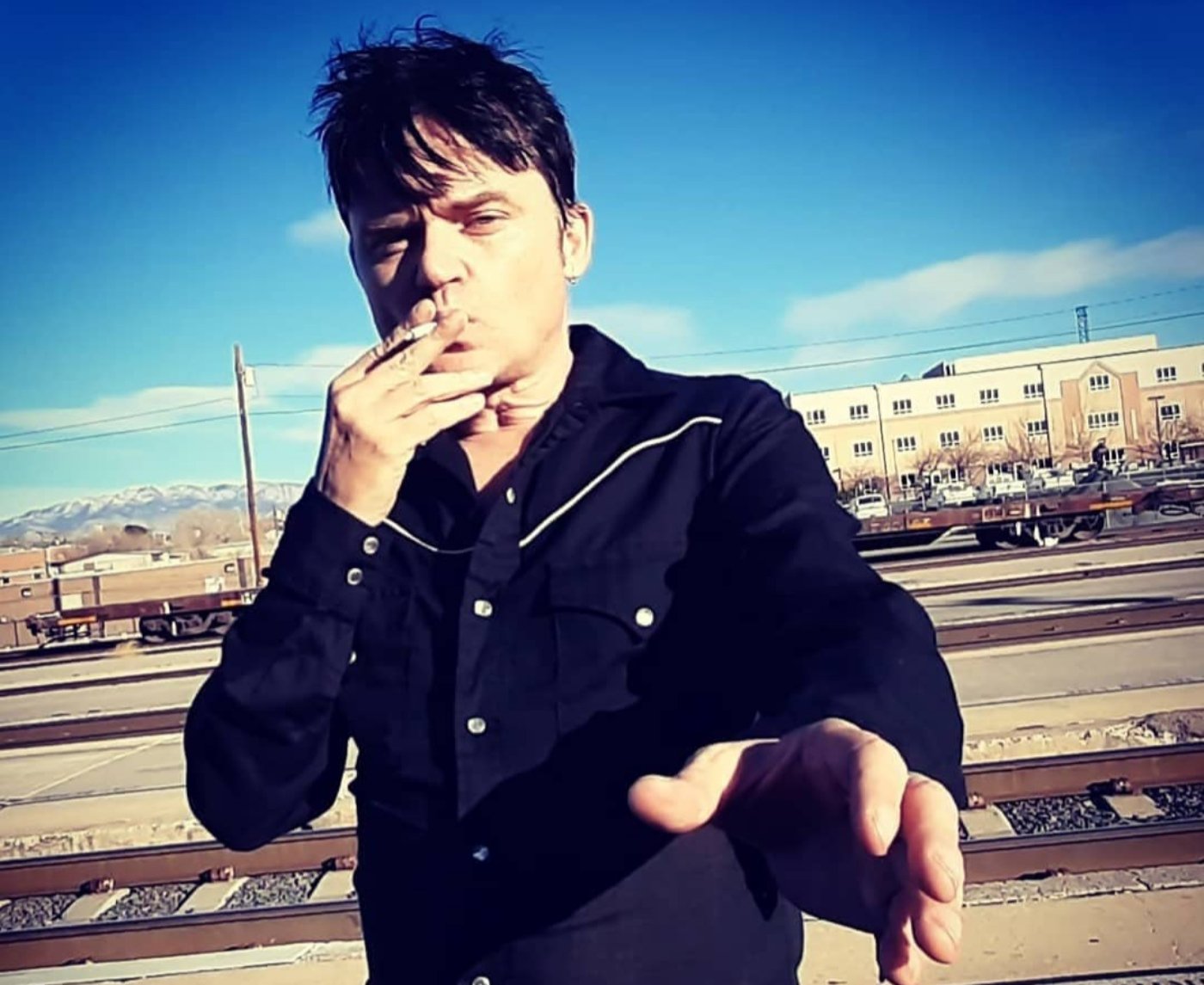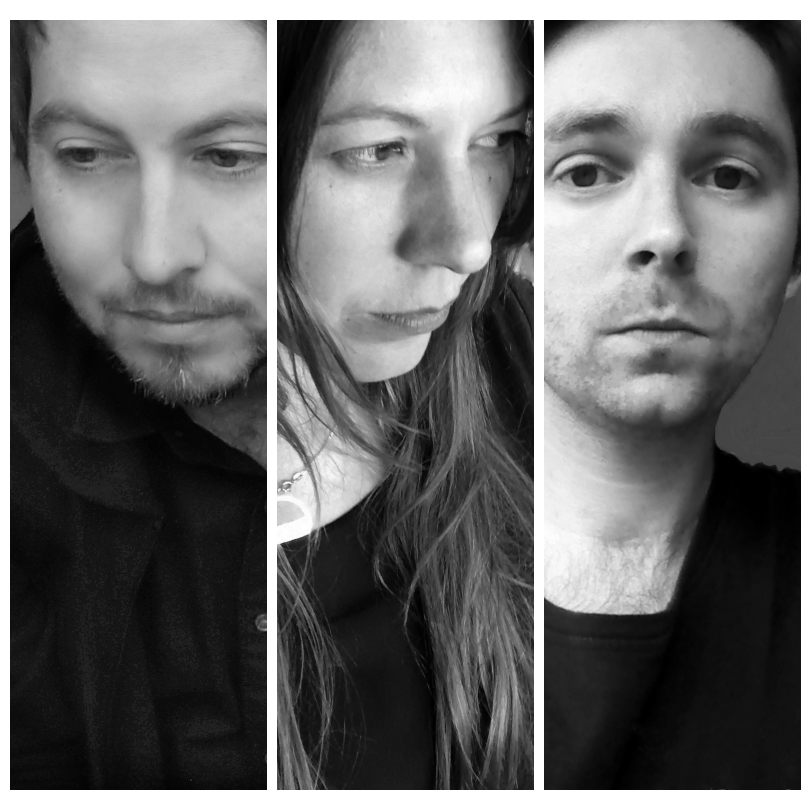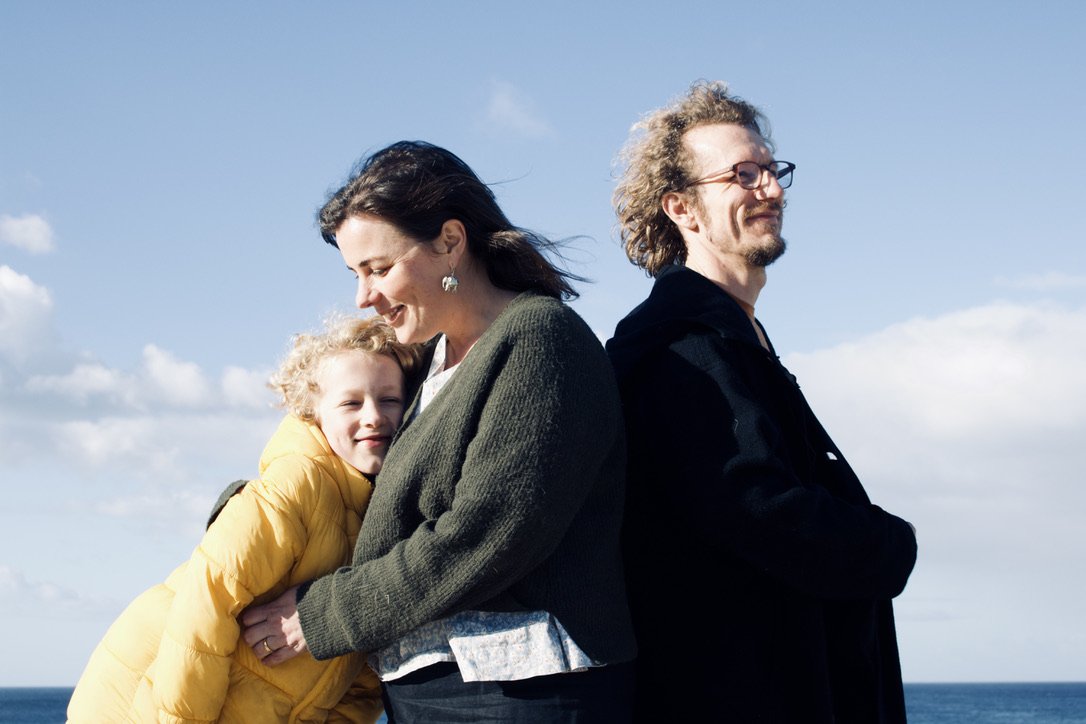Henika: Interview + New Album 'Strange Creatures'
KATIE BROWN - 8 NOV 2021
PHOTO SUPPLIED
“Made it through another night, celebrate the morning light”
Conceptual and big-hearted, new avant-garde album Strange Creatures by genre-bending Auckland-based artist Henika, aka Henrieta Tornyai, is, as its name suggests, anything but ordinary. Beginning with a cacophony of native Aotearoa birdsong, opening track “Dawn Chorus” appropriately sets the scene as the wake-up for the album itself, and we quickly find ourselves tumbling down a proverbial rabbit hole into an avian world running parallel to ours, far removed from a collection of ‘relaxing bird tweets’.
With its inception dating back to a fascination with the then-unfamiliar call of the tui at just 8 years of age after moving to Aotearoa from Slovakia, Strange Creatures has been a project spanning several years. Informed by a strong vision to create an album dedicated to Aotearoa’s native bird species, built around their call and song and drawing attention to both their endangered status and the state of the environment as a whole, Henrieta gave the project both ample time and resources in order to bring it to life. Following the release of her debut self-titled EP in 2016, the jazz school-trained artist spent a year at MAINZ learning production in order to be able to make the necessary recordings and produce the work, incorporating her vision of its different elements.
Using Ableton Live as her production tool, Henrieta gleaned her field recordings from predator-free sanctuaries, the majority of which were from Tiritiri Matangi, an island sanctuary in the Hauraki Gulf where she stayed for three nights in a DOC hut, waking at 4:30am each morning to record the surrounding birdsong. Rounding out the instrumentation with synths, guitar and double bass played and recorded by herself at her home studio, some additional recording was done at DepotSound, with Morgan Allen of Allen Audio stepping in on mixing duties.
Throughout the album Henrieta employs a range of different stylistic techniques, letting the birds themselves drive the direction each song took, whether through the rhythmic beatboxer-style call of the tui, the bell-like tones of the korimako, or the bass-filled boom of the kakapo. Blues, hiphop and experimental electronica all have their moment, but the album is still extremely cohesive, with lyrics written from the point of view of the birds and their trials and tribulations. Although the underlying message is weighty, a quirky humour is threaded throughout, and this, alongside Henrieta’s vocal style and her jazz sensibility, draw the whole project tightly together as unifying threads.
Channeling activism through the alchemy of creativity, Strange Creatures is an empowered and an empowering body of feminine-energy work that carries a particular audacity and strength: the characters throughout it aren’t weak creatures fading away, but are unique personalities with fighter spirits - they just need our help. And there’s a quirky juxtaposition throughout the whole in the placement of these classic, timeless birdsong sounds against an avant-garde bed of hiphop-electronica-jazz: it imbues each bird with unexpected life, colour and personality through Henrieta’s interpretation of them. This is extremely clever given the wake-up call Henrieta is hoping to pass on through the album: it’s easy to ignore something that is at a distance, but much harder when it’s up close and personal, taking on a life form that makes you consider it in a completely different - and more empathetic - light.
"Birds are so much more than just some background ornamentation that we take for granted. They are living, breathing beings who feel just like us. They are unique, precious and vulnerable, just like us. I want listeners to stop and really listen to the birds, appreciate their beauty and hopefully care enough to do something to stop their demise because their demise is our demise. So much has already been lost. Immediate drastic action is necessary to save the remaining species. We are living in an emergency and time is running out. I want listeners to be rattled by my message. This isn't some new age meditation album with relaxing bird tweets. It's a call to action.”
All proceeds from the album go towards various volunteer conservation organisations such as the Supporters of Tiritiri Matangi.
Buy Strange Creatures on Bandcamp.
Interview below.
Find Henika on Instagram | Facebook | Spotify | Apple Music | YouTube
KATIE: YOU LET THE CALL OF EACH BIRD DRIVE THE DIRECTION OF EACH SONG ON ‘STRANGE CREATURES’: HOW DID YOU MANAGE TO ‘INTERPRET’ EACH BIRD’S SONG?
Henika: Some seemed obvious like the Kokako which has these beautifully sad and mournful long tones. It was just crying out to be put into a bluesy setting. The glissandos fit very well with my slide guitar and double bass. The Ruru has a jazz sensibility. Its distinctive call really swings in my opinion, so I knew it had to go in that direction. It’s a night bird too and jazz is the music of the night.
Some were really tough though. For example, the Tieke’s call is like sinister maniacal laughter. I ended up writing this dark apocalyptic piece with a spoken word monologue about the extinction of humanity and the birds having the last laugh after all. I never expected to end up there! I love falling down the creative rabbit hole. This project definitely pushed my writing in new directions. It was both incredibly challenging and fun.
WAKING UP AT 4:30AM TO RECORD THE DAWN CHORUS AT TIRITIRI MATANGI WOULD HAVE BEEN A PRETTY MAGICAL EXPERIENCE! HOW DIFFICULT WAS IT TO CLEANLY CAPTURE THE SOUNDS YOU WERE HEARING?
I got very lucky with the weather. On the first day, I didn’t get much usable material because it was very windy. Wind isn’t something you can easily edit out. I was worried I wouldn’t get enough material and would have to come back another time. At 4:30 in the morning though, everything went absolutely still. No wind. That’s when the island came alive with song. It started with just a few, here and there and then gradually grew into something cacophonous and lasted over an hour. The sound was all around me, it was almost overwhelming. Absolutely unforgettable. I got a lovely clear recording but it does not do it justice. You have to be there and experience it for yourself. It’s not just the sound but the change in atmosphere as the sun comes up. Black and white slowly turning to vivid colour, the warmth of the first rays of light. I came to understand why the birds were celebrating the dawn. It really was a ‘song’ too. Clear repeated rhythms in ⅞ time of all things, melodies that would change and develop and harmony in the musical sense too. I just added some lyrics and structure.
WHAT WERE THE BIGGEST SURPRISES ALONG THE WAY?
I think the thing that surprised me the most was how in tune in terms of pitch the birds were and how easily they fit into ‘human music.’ I fully expected to have to manipulate the recordings so I could play my instruments with them but I hardly had to. I just had to identify the pitch of the bird call and find a complementary key. It just goes to show how universal music is. There are certain frequencies that resonate with all living creatures. It also shows how we are all related on the evolutionary tree.
I recently read about a study that showed birds produce dopamine in their brains while singing. They not only sing for communication but also for pleasure, just like us!
PHOTO SUPPLIED
DID YOU FIND YOU WERE DRAWN TO ONE PARTICULAR BIRD IN PARTICULAR, OR THAT YOU RELATED TO ONE ESPECIALLY? IS THERE ONE THAT HOLDS A SPECIAL PLACE IN YOUR HEART – DO YOU HAVE A ‘SPIRIT BIRD’?
That’s a really tough choice because I love them all and their idiosyncrasies. However, it was the Tui that started it all. I remember hearing one for the first time as a child and being just mesmerised by the intricacy and complexity of its song. I couldn’t believe it was even a bird! Tui are so incredibly musical and each bird’s song is unique. You never know what sound they will make next. It’s creativity in its purest form. They are like the John Coltrane of the bird world.
THROUGHOUT THE ALBUM THERE IS A SENSE OF THE WHOLE PROJECT HAVING BEEN HELD WITH OPEN HANDS – LETTING IT BREATHE AND BECOME WHAT IT NEEDED TO, RATHER THAN TRYING TO FIT IT INTO A PRECONCEIVED MOLD. WHAT IS YOUR CREATIVE APPROACH IN THIS RESPECT?
Firstly, I knew what I DIDN’T want it to turn out like. I didn’t want to make a relaxing new age album with some bird sounds on it. I also didn’t want to make it too preachy and alienate people. I just knew it had to be totally sincere to work, which is very hard to pull off. That’s why I went about it song by song. I wanted the birds to ‘write’ it as much as possible so I started by arranging the birds first and only added other instruments if and when they were needed. Some songs were completely reworked several times. It was so easy just to add more guitars or other familiar things and bury the birds or just make them a tokenistic gimmick. I had to really stop myself and try to strip back over and over. “It’s not about me and what I can do” I told myself, “it’s about the birds!”
YOU STUDIED AT MAINZ FOR A YEAR TO UPSKILL AND BRING YOUR CONCEPT TO LIFE, INCLUDING THE SOLO LIVE DYNAMIC OF IT. WHAT WAS IT LIKE TO START LEARNING THESE SKILLS AND APPLY THEM TO YOUR MUSIC THIS TIME AROUND?
It was a very steep learning curve. I felt like I was starting all over again. MAINZ was such a great environment full of super supportive people. Both the tutors and students really helped me by sharing their knowledge. It was the best place for me to learn technical skills. Watching Youtube videos was getting me nowhere. There is nothing like being able to ask someone how something works and have them show you. It opened up a whole new world. I love my guitar and double bass and the sounds they can make but a computer can make any sound you could ever imagine. The possibilities are endless. I feel like my music could go in any direction now. It’s incredibly exciting.
HOW HAVE YOU FOUND THE TRANSITION FROM HAVING A LIVE BAND, AS YOU NEEDED WHEN PERFORMING YOUR LAST EP’S WORKS LIVE, TO BEING SOLO? WHAT’S THE BEST PART ABOUT IT?
The best part is not having to organise band practice! But seriously, convenience is a huge bonus, especially now with lockdown. I can put on my own live stream and it sounds just like a real gig would. Don’t get me wrong, I love playing in a band. There’s no substitute for the moments of interplay, creativity and the camaraderie being in a band brings. I won’t stay solo forever. I miss playing with a live drummer the most so I might move to a duo next. Drum machines just don’t have a soul.
HOW DID MOVING FROM SLOVAKIA TO AOTEAROA AT 8 YEARS OF AGE IMPACT YOUR WORLD?
Total culture shock! I didn’t speak a word of English. At that age, you don’t realise what moving halfway across the world really means. I thought I was going on an adventure, I didn’t realise I wouldn’t be able to see some of my family and friends for years. It was tough but I adapted and grew quickly. The thing I love most about going to school in NZ is that creativity is so encouraged. I may not have gone down a musical path if I had stayed in Slovakia as lessons weren’t so readily available in schools like they are here.
WHAT’S YOUR MUSICAL BACKGROUND? DOES MUSICALITY RUN IN YOUR FAMILY?
My parents aren’t musical but there was always music playing in the house when I was growing up. I was very much influenced by my father’s tastes like Frank Zappa and 70s prog rock. I was also very influenced by my older brother’s tastes. He introduced me to the work of Mike Patton and Bjork whom I still admire greatly today. I picked up guitar around age 10 and didn't look back. I knew I had to play music. Not because I had talent and it came easily (it really didn’t) but because of how it made me feel. I did Rockquest as a teenager (didn’t get past the heats) and once I got a taste of being on stage, I was hooked. Music is just so powerful. It’s the closest we have to transplanting an emotion from one brain to another.
I went to Massey uni to study jazz. I also moved to the States for a couple of years to further my study there. I learnt the most from just doing actual gigs though. All the advanced music theory in the world won’t help you if you can’t make an audience move.
PHOTO SUPPLIED
IT IS INCREDIBLY SOBERING TO REALIZE HOW MANY SPECIES ARE ON THE BRINK OF EXTINCTION. WHAT DO YOU SEE AS BEING A SOLUTION TO THIS?
I am not a scientist or a politician. I don’t have any solutions unfortunately. As an artist, all I can do is make others value how precious and fragile our environment is. I hope my music will at the very least make people pause and appreciate just how beautiful and unique these birds are. When was the last time you stopped and really listened to the Tui in your garden? What if you never hear one again?
These creatures are much more than decorative curiosities. They are living, feeling beings just like us. The purpose of Strange Creatures is to show these parallels. We are one and if we can’t save them, we are in trouble too.
I think one thing we can do as individuals is to join local conservation efforts. There are so many volunteer-led organisations out there that plant native trees, clean up forests and trap pests. Or at least plant a Kowhai tree in your garden so the Tui and Kereru have someplace to hang out.
DO YOU THINK YOU WILL FOLLOW SIMILAR CONCEPTS WITH YOUR FUTURE WORK? WHAT DRIVES YOUR INSPIRATION?
My first songs were quite introspective and personal. As a writer, this can be emotionally draining. I would often find myself second guessing what I was writing or with complete writer's block. With Strange Creatures, I was writing about something that I was really passionate about, something bigger than me. Suddenly, I felt totally uninhibited creatively. I had a message that people should hear, that mattered. I wasn’t just writing about my last breakup. Not that there’s anything wrong with songs about breakups, I just didn’t think I had anything original to say on that subject. I think I will stick to bigger issues because it allows me to step outside myself but also because I want to make music that helps others.
WHERE DO YOU SEE YOURSELF HEADING WITH THE WHOLE PROJECT, AND YOUR MUSIC IN GENERAL?
The dream, Covid permitting, is to one day perform Strange Creatures on Tiritiri Matangi itself. That would be the perfect culmination for this project, going full circle. That’s in the works and will hopefully happen next year. I also want to tour the country but that is obviously on hold at the moment.
I am just as serious about the visual side of my art as the music. I want to incorporate more visual content both with live performance but also with the studio recordings. I would like the next work to be a visual album with each song having a video that comprises a full short film. I have no idea what it will be about yet though.






![[Friday Feature] Valere: Interview & Review of Single/Video ‘Lily’s March’](https://images.squarespace-cdn.com/content/v1/60df978127837427ee475bb1/1712873492906-GFSK6SW4FJ2Z2STOJVAM/Valere+-+Photo+Credit+Hayden+Graham+%281%29.jpg)

![[Video Premiere] Sig Wilder & Friends: Video for ‘Texasman’ + Interview](https://images.squarespace-cdn.com/content/v1/60df978127837427ee475bb1/1699397388451-3GDFG0FOA5T5WPA33ANE/IMG_2393.JPG)


![[International] Jackson VanHorn Releases New EP ‘Liminal Music, Vol. 1’](https://images.squarespace-cdn.com/content/v1/60df978127837427ee475bb1/1695708847770-UF5H8G2X7N9Q9KF22TA5/Jackson+VanHorn+Liminal+Music+Vol+1.jpeg)

![[Friday Feature] Jazmine Mary: Interview + New Album ‘Dog’](https://images.squarespace-cdn.com/content/v1/60df978127837427ee475bb1/1686280012940-2OBAFHQ9HIJFIVNYE3CZ/JazmineMary_Album+image+no+text+-+Credit+-+Jim+Tannock.jpg)
![[Video Premiere] Emily Rice Releases New Single/Video ‘Warenoa’](https://images.squarespace-cdn.com/content/v1/60df978127837427ee475bb1/1685044212209-9X8UTD0I22FY3LAGKDHI/Press+Shot_+Photo+Credit%2C+Charles+Looker.jpg)


![[Australia] Benny Time: Interview + New Album ‘Benny and Friends’](https://images.squarespace-cdn.com/content/v1/60df978127837427ee475bb1/1653689671831-U73A00Y16B4PYUPIEY7X/Benny+Time+3596.jpg)











![[International] Alison Clancy: Poised for Greatness](https://images.squarespace-cdn.com/content/v1/60df978127837427ee475bb1/1645751104499-HT5MCDXMERC9SDSW4XW5/Alison+Clancy+Mutant+Gifts+Cover.jpeg)
![[International] Halfway Harbor: ‘Table Stains’](https://images.squarespace-cdn.com/content/v1/60df978127837427ee475bb1/1644389562677-EPD8X84SUDEW0Y5THAX3/HH+Photo+2.JPG)